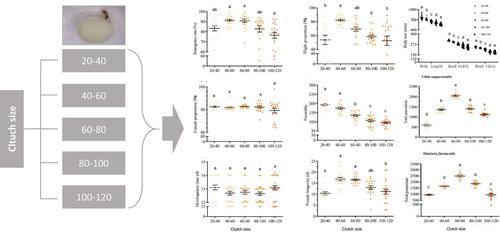Controlling the clutch size of Trichogramma wasps on the factitious host of Antheraea pernyi to improve their breeding quality and pest control potential
Abstract
BACKGROUND
Trichogramma wasps are mass-produced widely for biological control of various lepidoptera pests in agroforestry ecosystem. During the production, the Trichogramma quality can be affected by many factors. One critical factor is the clutch size reared on large host eggs.
RESULTS
This study evaluated the effect of clutch size on the quality of Trichogramma dendrolimi reared on Antheraea pernyi eggs. Optimal clutch sizes (40–60 or 60–80 eggs/clutch) resulted in higher fecundity (174.5 or 135.6 eggs/female), emergence rate (91.14% or 90.69%), adult longevity (16.85 or 16.55 days), flight ability (82.17% or 69.31%), and parasitism of target pests (Ostrinia furnacalis: 1657.6 or 2500.8 eggs; Chilo suppressalis: 1364.9 or 2046.3 eggs) and larger body size female offspring per brood. Large clutch sizes (> 80 eggs) significantly reduced the fecundity (~100 eggs/female) of T. dendrolimi. When the clutch size was larger than 100 eggs, the parasitoid offspring almost lost parasitism capacity (< 20 eggs/female).
CONCLUSION
A medium clutch size of 60–80 eggs per A. pernyi egg was found to be optimal for maximizing the fitness-related parameters and biocontrol potential of T. dendrolimi. These findings provide valuable insights for the mass production of high-quality T. dendrolimi for effective biological pest control. © 2025 Society of Chemical Industry.





 求助内容:
求助内容: 应助结果提醒方式:
应助结果提醒方式:


